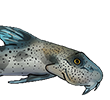Planiloricaria cryptodon
-
Charly EON
- Posts: 104
- Joined: 07 Jan 2003, 04:58
- My images: 53
- My catfish: 23
- My aquaria list: 1 (i:0)
- Spotted: 59
- Location 1: Bordeaux - FRANCE
Planiloricaria cryptodon
Hello
I'm looking for data dealing with habitat, food anf breeding of this species. Who can help ?
thanks
CH EON
I'm looking for data dealing with habitat, food anf breeding of this species. Who can help ?
thanks
CH EON
- Silurus
- Posts: 12454
- Joined: 31 Dec 2002, 11:35
- I've donated: $12.00!
- My articles: 55
- My images: 896
- My catfish: 1
- My cats species list: 90 (i:1, k:0)
- Spotted: 428
- Location 1: Singapore
- Location 2: Moderator Emeritus
- Yann
- Posts: 3617
- Joined: 30 Dec 2002, 20:56
- I've donated: $20.00!
- My articles: 8
- My images: 275
- My cats species list: 81 (i:0, k:0)
- My BLogs: 2 (i:3, p:81)
- Spotted: 109
- Location 1: Switzerland
- Location 2: Switzerland
- Interests: Catfish mainly form South America, Cichlids, Geckos, Horses WWII airplanes, Orchids
Hi!
Charly I have an bit of an article that was in the BSSW sondernheft, I shall check it and I'll give you the info about it!???
Cheers
Yann
Charly I have an bit of an article that was in the BSSW sondernheft, I shall check it and I'll give you the info about it!???
Cheers
Yann
Last edited by Yann on 21 Jan 2003, 17:58, edited 1 time in total.
Don't Give Up, Don't Ever Give Up!
- coelacanth
- Posts: 880
- Joined: 31 Dec 2002, 13:19
- My articles: 1
- My images: 2
- My catfish: 4
- My cats species list: 32 (i:0, k:0)
- Spotted: 3
- Location 1: Bolton, UK
- Location 2: UK
- Interests: All things Aquatic
Re: Planiloricaria cryptodon
Hi Charly! Hans Evers has done a great little book on breeding some of the Loricariinae, including, I'm pretty sure, this species. Worth searching out.Charly EON wrote:Hello I'm looking for data dealing with habitat, food anf breeding of this species. Who can help ?
Bearing in mind that Hans will be in the UK next month for the Catfish Convention, and he is staying only 5 minutes away from where I live, why not jump on a plane and come over?......Then you can ask him yourself about them!
I will keep suggesting it until you give in.
Pete
-
Charly EON
- Posts: 104
- Joined: 07 Jan 2003, 04:58
- My images: 53
- My catfish: 23
- My aquaria list: 1 (i:0)
- Spotted: 59
- Location 1: Bordeaux - FRANCE
- Yann
- Posts: 3617
- Joined: 30 Dec 2002, 20:56
- I've donated: $20.00!
- My articles: 8
- My images: 275
- My cats species list: 81 (i:0, k:0)
- My BLogs: 2 (i:3, p:81)
- Spotted: 109
- Location 1: Switzerland
- Location 2: Switzerland
- Interests: Catfish mainly form South America, Cichlids, Geckos, Horses WWII airplanes, Orchids
Hi!
So here is a little summary about what has been written about him.
The specimens used for the description were caught by Lüling in the Rio Ucayali near the city of Pucallpa.
It was described by Isbrücker and Nijssen in 1986. Most imports seem to come from the region of Iquitos ( Rio Nanay). It was also proved that the species occur in the Rio Purus ( Brasil) and Rio Mamoré ( Bolivia).
They should not be kept under a volume of 300 liters because of their rather intense activity and their size.
It is a very peacefull fish , should not be kept with other Loricariidae such as members of the Ancistrini group as these might rasp the back of the fish while he is resting.
Feeding should consist of either live or frozen food. Tablets are also happily taken.
Special attention should be made to a very good water quality ( nitrates...)
Cheers
Yann
So here is a little summary about what has been written about him.
The specimens used for the description were caught by Lüling in the Rio Ucayali near the city of Pucallpa.
It was described by Isbrücker and Nijssen in 1986. Most imports seem to come from the region of Iquitos ( Rio Nanay). It was also proved that the species occur in the Rio Purus ( Brasil) and Rio Mamoré ( Bolivia).
They should not be kept under a volume of 300 liters because of their rather intense activity and their size.
It is a very peacefull fish , should not be kept with other Loricariidae such as members of the Ancistrini group as these might rasp the back of the fish while he is resting.
Feeding should consist of either live or frozen food. Tablets are also happily taken.
Special attention should be made to a very good water quality ( nitrates...)
Cheers
Yann
Don't Give Up, Don't Ever Give Up!





